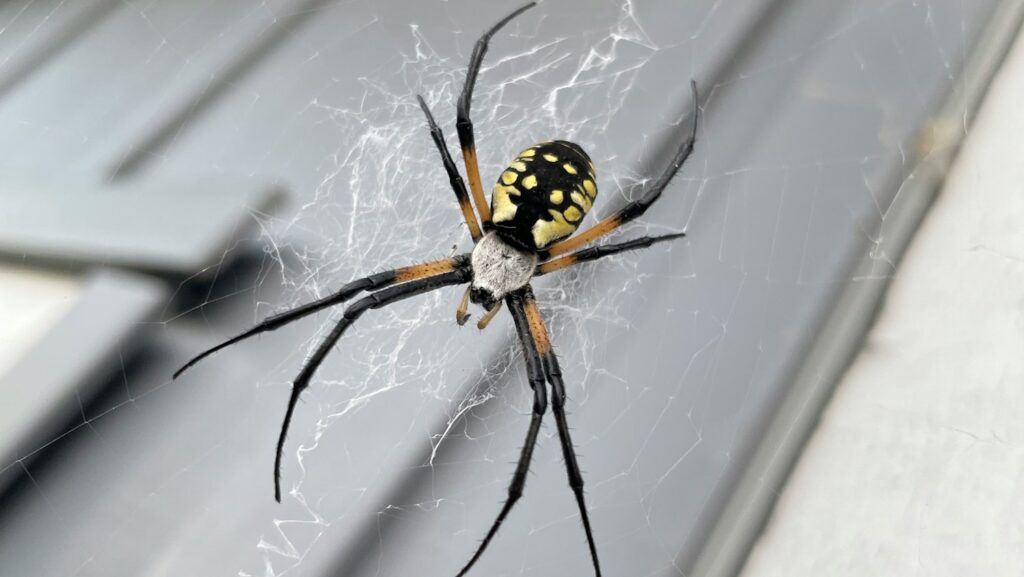
In the diverse world of arachnids, some of the most visually striking species are actually harmless to humans. While venomous creatures often display bright warning colors to advertise their toxicity—a phenomenon known as aposematism—many non-venomous spiders also boast vibrant hues and patterns. This seeming contradiction raises fascinating questions about evolutionary strategy and survival tactics in the spider world. From brilliant yellows and oranges to electric blues and vivid greens, these colorful non-venomous spiders have developed their eye-catching appearances for specific evolutionary advantages rather than to warn of venom. Their coloration serves various ecological functions that help these eight-legged creatures thrive in their environments without relying on toxic defenses.
Mimicry: Borrowing Dangerous Reputations
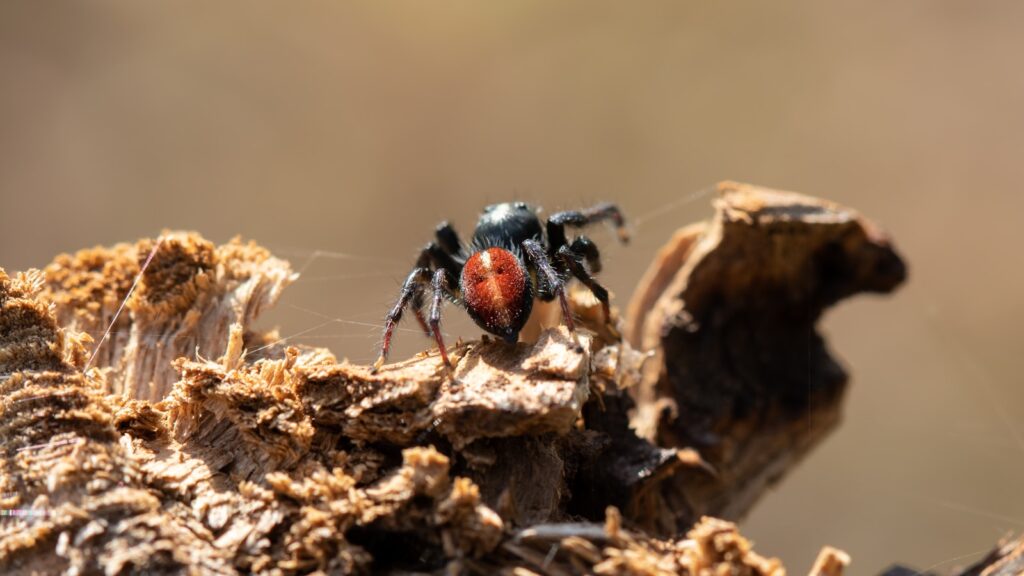
One of the most common reasons for bright coloration in non-venomous spiders is Batesian mimicry, where harmless species evolve to resemble dangerous ones. By adopting the warning colors and patterns of venomous spiders, these mimics effectively “borrow” the fearsome reputation of their models without actually possessing toxic defenses. The jumping spider Myrmarachne plataleoides, for instance, has evolved to look remarkably like the aggressive and venomous ant species in its habitat. This remarkable resemblance extends beyond mere coloration to include body shape and movement patterns, creating a convincing disguise that deters potential predators who have learned to avoid the dangerous model species. The effectiveness of this strategy depends on the relative abundance of the model and mimic in their shared environment, with the protection weakening if mimics become too common relative to their venomous counterparts.
Camouflage Through Conspicuousness

Counterintuitively, bright colors can sometimes serve as effective camouflage, especially in vibrant habitats like flowering plants or colorful leaf litter. The golden silk orb-weaver spider, with its striking yellow body, blends remarkably well among yellow leaves and flowers when viewed from a distance. This form of background matching, sometimes called disruptive coloration, breaks up the spider’s outline against similarly colored backgrounds, making them less visible to both prey and predators. Some crab spiders can actually change their color over several days to match the flower they’re hunting on, shifting between white, yellow, and even pink hues to remain hidden while they ambush pollinating insects. This specialized form of camouflage allows these non-venomous spiders to compensate for their lack of venom by increasing their hunting success and reducing predation risk through visual deception rather than chemical defenses.
Sexual Selection and Mate Attraction

Bright colors in non-venomous spiders often play a crucial role in courtship displays and sexual selection, particularly among male spiders trying to attract females. The peacock spider family (Maratus) provides a spectacular example, with males sporting brilliant blue, red, and gold patterns on specialized abdominal flaps that they raise and display during elaborate courtship dances. These colorful displays serve as honest signals of genetic quality and health, helping females select the most fit mates in a process that has driven the evolution of increasingly elaborate patterns. The colors themselves are often produced by specialized scales and hairs that create structural color through light refraction rather than pigments, resulting in the iridescent qualities that make these displays so eye-catching. Sexual selection pressure can be so strong that it overrides the potential increased predation risk that comes with being more visible, especially when mating opportunities are limited and competition is fierce.
Startling Predators with Flash Coloration
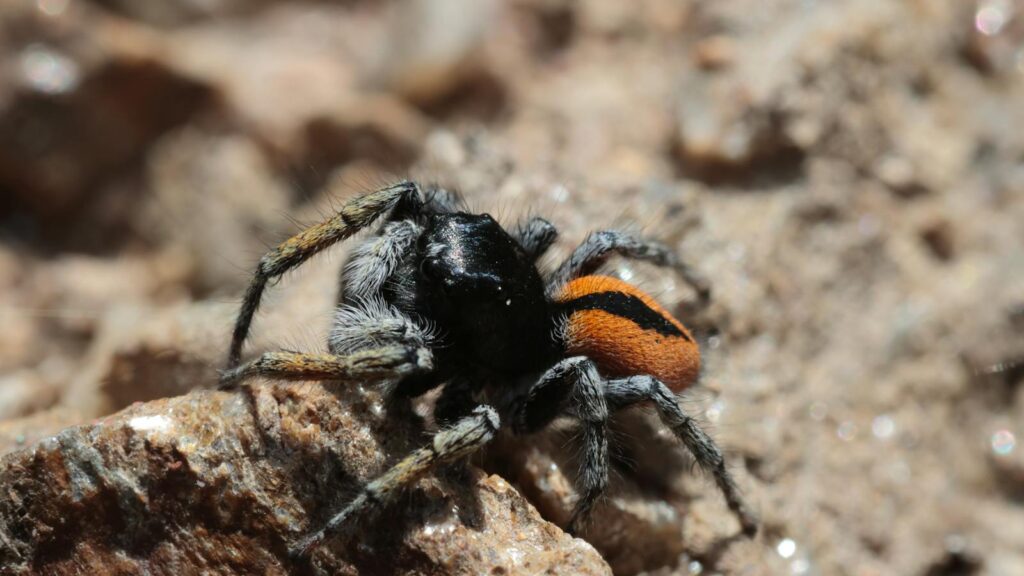
Some non-venomous spiders use their bright colors as part of a startle display, revealing hidden patches of vibrant color when threatened. This defensive behavior momentarily confuses or startles predators, creating a crucial window of opportunity for escape. The jumping spider Phidippus clarus, for example, has bright red patches on its abdomen that are normally hidden but become visible when the spider adopts a defensive posture. These sudden flashes of unexpected color can cause predators to hesitate or even retreat, interpreting the display as a potential threat or simply becoming disoriented by the rapid visual change. The effectiveness of this strategy relies on the element of surprise rather than any actual harm the spider could inflict, making it particularly valuable for non-venomous species that lack chemical defenses. This behavioral adaptation works especially well against visually-oriented predators like birds and lizards, who may associate sudden color changes with danger based on previous encounters with truly dangerous prey.
Thermoregulation Benefits of Color

The bright coloration of some non-venomous spiders serves a practical physiological purpose related to temperature regulation. Darker colors absorb more heat, while lighter colors reflect it, allowing differently colored spiders to maintain optimal body temperatures in varying environments. Some orb-weaving spiders display temperature-dependent color changes, becoming more vibrantly colored in cooler conditions to maximize heat absorption during morning basking periods. This thermoregulatory function is particularly important for ectothermic creatures like spiders, whose metabolic activities depend on external heat sources. For active hunters like jumping spiders, maintaining the right body temperature through color-mediated heat absorption ensures they have the necessary energy for their quick movements and impressive leaps. In some species, this has led to seasonal dimorphism, where individuals display different color patterns depending on the time of year, adapting to changing temperature conditions throughout their life cycle.
UV Patterns Invisible to Human Eyes
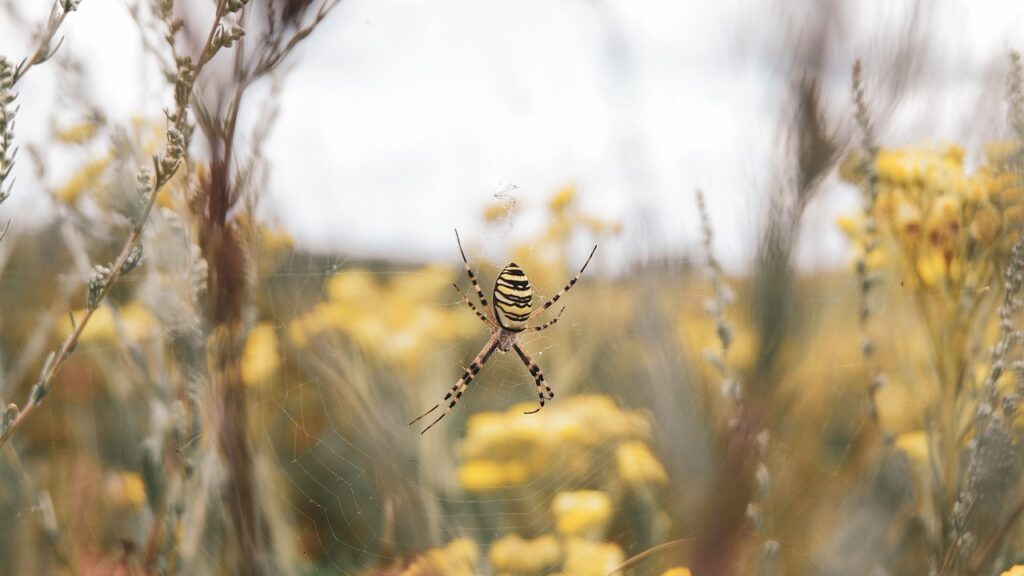
Many spiders that appear modestly colored to human eyes actually possess striking ultraviolet (UV) patterns that are visible to other arthropods and many vertebrate predators. These hidden displays serve various communication functions within spider communities while remaining inconspicuous to certain predators. The common yellow garden spider (Argiope aurantia), for example, incorporates UV-reflective silk into its web that creates patterns visible to insects but not to humans without special equipment. These UV markings may serve as species recognition signals, territorial markers, or even as sophisticated lures that attract insects to their webs by mimicking the UV patterns of flowers. The evolutionary advantage of this selective visibility allows spiders to communicate with potential mates or warn competitors while minimizing detection by some predator groups. This represents a fascinating example of private communication channels that operate outside the human visual spectrum, highlighting how our perception of spider coloration captures only part of their visual signaling strategy.
Aposematic Mimicry Without Venom

Some non-venomous spiders have evolved to appear dangerous even without having the venom to back up their threatening appearance. This strategy, while similar to Batesian mimicry, operates on a slightly different principle where the spider might have alternative defenses like irritating hairs, bad taste, or simply difficult-to-consume body structures. The bold jumping spider (Phidippus audax), with its striking black body and iridescent green chelicerae, presents a formidable appearance that many predators avoid despite its relatively harmless nature. These spiders often adopt threatening postures when confronted, raising their front legs and displaying their colorful features prominently to enhance the illusion of danger. The effectiveness of this strategy reflects a fundamental truth in predator-prey dynamics: when the cost of attacking a potentially dangerous prey is high, predators tend to err on the side of caution. This creates an evolutionary opportunity for non-venomous species to develop intimidating appearances that discourage predation without investing in metabolically expensive venom production.
Social Signaling Among Spider Communities
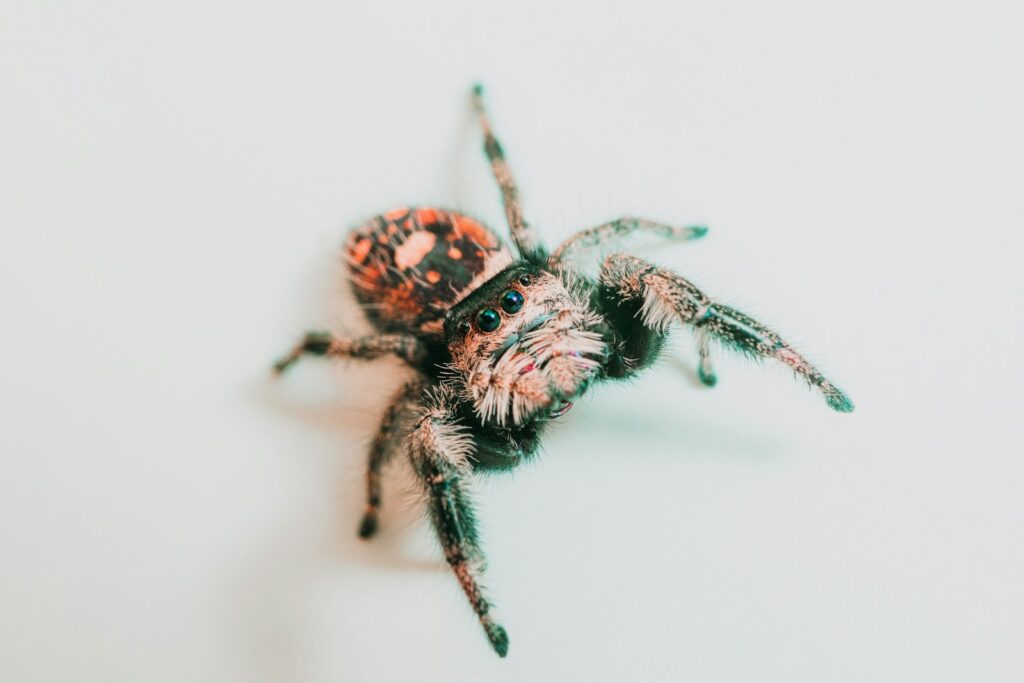
In species that exhibit social behavior or tolerance, bright colors may facilitate communication and recognition between individuals of the same species. The social jumping spider Phidippus johnsoni uses its distinctive red abdomen and patterning as a species identifier when encountering others in shared territories. These visual cues help prevent unnecessary aggressive encounters between conspecifics and can signal reproductive status or territorial boundaries. For semi-social spiders that share communal webs, like some Nephila species, distinctive coloration helps maintain colony cohesion and reduces instances of cannibalism by facilitating rapid identification of colony members. The evolution of such visual communication systems represents a sophisticated adaptation that supports more complex social structures than are typically associated with arachnids. These social signaling functions of bright coloration demonstrate how visual traits can serve multiple adaptive purposes simultaneously, enhancing both individual survival and group dynamics.
Predator Confusion Through Pattern Complexity
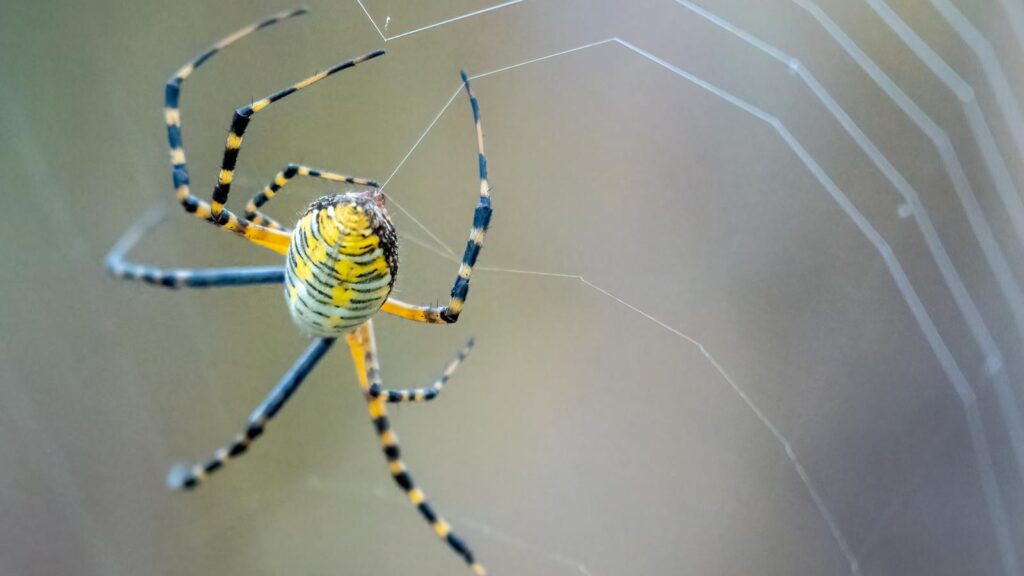
The intricate patterns and color combinations on many non-venomous spiders can serve to confuse predators by making it difficult to identify vital body parts or predict movement directions. The ornate abdomen patterns of many garden spiders create visual illusions that obscure the spider’s actual orientation and structure, making it challenging for predators to target vulnerable areas effectively. Some jumping spiders display false “eyes” or contrasting color patches that draw attention away from their actual head region, misleading predators about which direction they might flee. This form of defensive coloration works particularly well against visually hunting predators that need to precisely target specific body parts for successful prey capture. The complexity of these patterns often increases in species that occupy exposed positions during daylight hours, when visual predators are most active. Studies have shown that predators require longer decision-making time when confronted with complexly patterned prey, providing the spider with precious additional seconds to detect the threat and escape.
Evolutionary Trade-offs of Bright Coloration
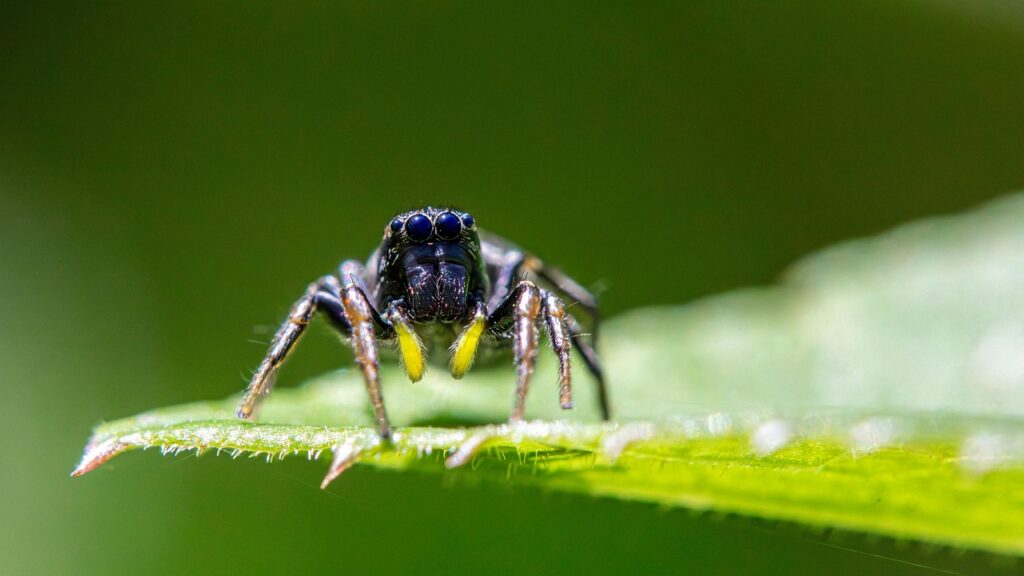
The development of bright colors in non-venomous spiders represents a delicate evolutionary balance between visibility benefits and increased predation risk. For each spider species, natural selection has fine-tuned this trade-off based on their specific ecological niche, behavioral adaptations, and predator community. Jumping spiders of the Habronattus genus show remarkable variation in male coloration depending on the predator pressure in their habitat, with more cryptic patterns emerging in environments with higher visual predator density. The metabolic costs of producing and maintaining bright coloration must be offset by tangible survival or reproductive advantages for these traits to persist in populations. Researchers have documented cases where closely related spider species show divergent coloration strategies based on subtle differences in their microhabitat preferences or activity patterns. These evolutionary compromises demonstrate the complex interplay between natural and sexual selection forces that shape spider appearance, with bright colors persisting only when their benefits outweigh their costs in specific ecological contexts.
Color Change Capabilities in Non-Venomous Spiders
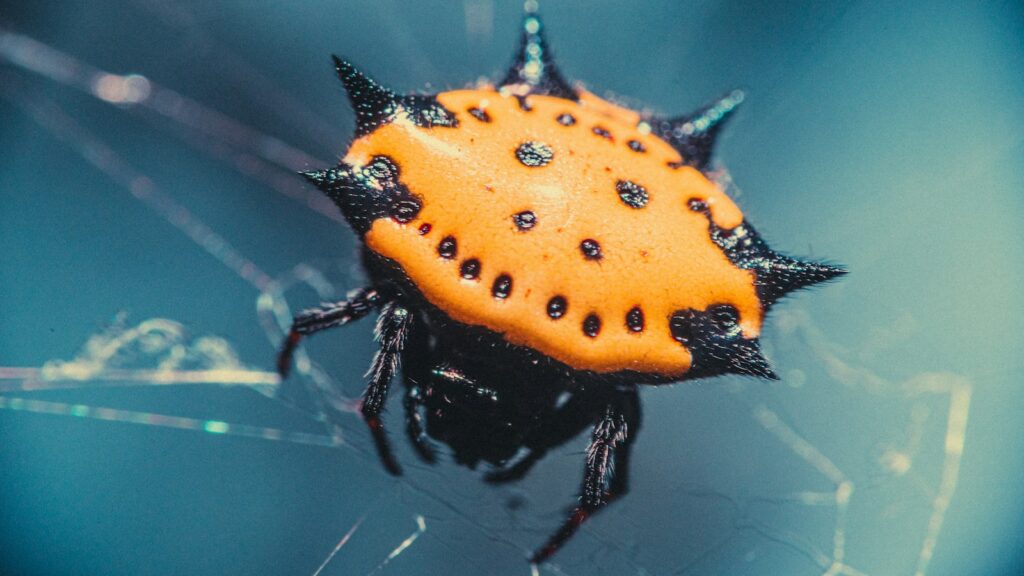
Some non-venomous spiders possess the remarkable ability to change their coloration in response to environmental conditions, predation threats, or reproductive status. The magnificent spider (Ordgarius magnificus) can shift from bright yellow to muted brown when disturbed, effectively disappearing against tree bark when threatened. This color plasticity provides these spiders with unparalleled adaptability, allowing them to optimize their appearance for different situations without permanent physiological commitments. The mechanisms behind these color changes vary across species, ranging from relatively slow pigment redistribution processes that occur over days to rapid physiological responses involving specialized chromatophore cells. Young spiders of some species undergo dramatic color changes as they mature, often starting with bright warning colors that deter predators when they’re most vulnerable before developing their adult coloration patterns. This developmental color plasticity represents an elegant solution to changing selection pressures throughout a spider’s life cycle, maximizing survival at each stage of development.
The Role of Diet in Spider Coloration
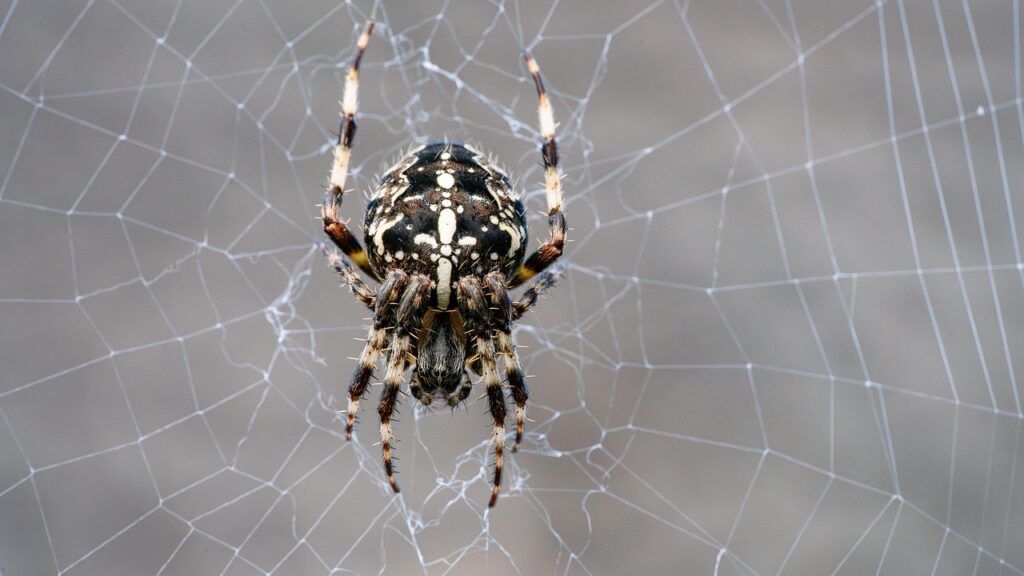
The brilliant hues displayed by some non-venomous spiders may be directly influenced by their diet, with certain pigments derived from the prey they consume. Spiders that feed primarily on pollen-dusted insects or those that consume specific plant materials when young may incorporate carotenoids and other pigments from these food sources into their exoskeleton. Research on orb-weaving spiders has demonstrated that individuals maintained on different experimental diets can develop noticeably different coloration intensities, particularly in yellow and red hues. This diet-dependent coloration creates potential connections between habitat quality, prey availability, and the brightness of spider displays. Some spiders appear to selectively consume prey with higher concentrations of particular pigments when preparing for mating seasons, enhancing their display colors when reproductive signaling becomes most important. This dietary influence on coloration creates fascinating ecological connections between plant communities, insect populations, and the visual appearance of the spiders that depend on them.
Conserving Colorful Spider Diversity
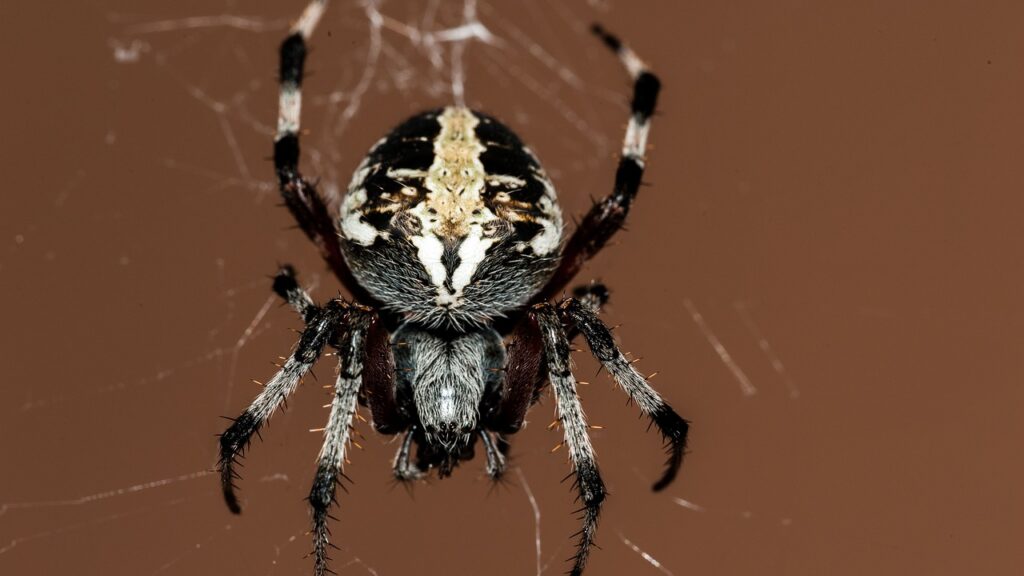
The vibrant diversity of colorful non-venomous spiders faces numerous conservation challenges in the modern world, from habitat destruction to climate change impacts that disrupt the ecological relationships supporting their specialized adaptations. Many of the most spectacularly colored spider species occur in biodiversity hotspots like tropical rainforests and specialized microhabitats that are particularly vulnerable to human disturbance. The peacock spiders of Australia, with their incredible displays, often occupy small geographic ranges that could be completely eliminated by single development projects or changing fire regimes. Conservation efforts increasingly recognize these charismatic arachnids as flagship species that can generate public support for invertebrate conservation more broadly. Protecting the complex ecological conditions that maintain selection pressures for bright coloration, including predator communities, flowering plant diversity, and specialized microhabitats, represents a crucial aspect of preserving these evolutionary marvels. By understanding and appreciating the ecological significance of spider coloration, conservation initiatives can better account for the subtle factors that maintain arachnid diversity beyond simple habitat preservation.
Conclusion
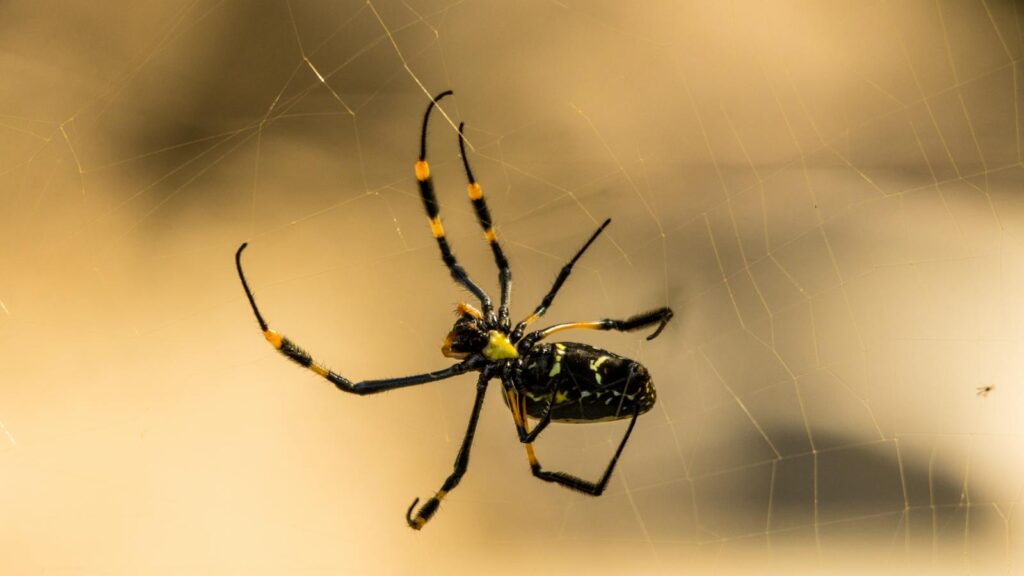
The bright colors exhibited by non-venomous spiders represent fascinating examples of how evolution can produce similar traits for entirely different reasons across species. From mimicking dangerous counterparts to attracting mates, confusing predators, or regulating body temperature, these colorful adaptations demonstrate the incredible diversity of survival strategies in the spider world. Each vibrant pattern and hue tells a story of ecological adaptation, reflecting millions of years of evolutionary refinement in response to specific environmental challenges. As scientists continue to study these remarkable arachnids, they uncover new dimensions of how visual signals function in nature, challenging our assumptions about what drives the development of striking animal coloration. These harmless but eye-catching spiders remind us that in nature, appearances can be both deceiving and remarkably sophisticated, serving multiple biological functions simultaneously through elegant evolutionary compromises.
